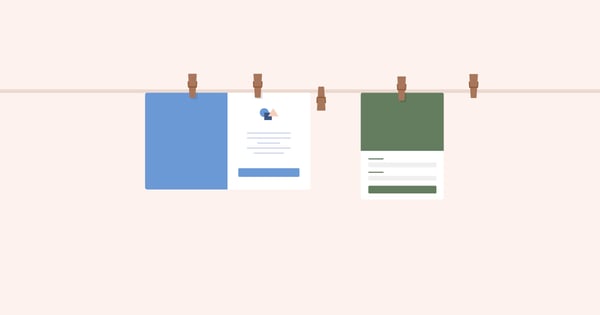Forget everything you think you know about website popups.
In this article, I'll share the seven types of popups you need to know or at least be familiar with.
Not all will be relevant to your business, but those that are will inform the best practices to follow to gain more subscribers, customers, and repeat buyers for your business.
Let’s take a look.
Table of Contents
1. Cart Abandonment Popups
I hate it.
You hate it.
And just about every online retailer on the planet hates it.
I’m talking, of course, about cart abandonment.
And it isn’t going away.
In fact, it’s getting worse.
As of writing (March 2020), the average cart abandonment rate is 88.05 percent across all industries, with automotive seeing rates as high as 96.88 percent. (!)
On the other hand, reasons consumers abandon their cart haven’t changed, with 41 percent citing unexpected shipping costs as their reason for leaving.
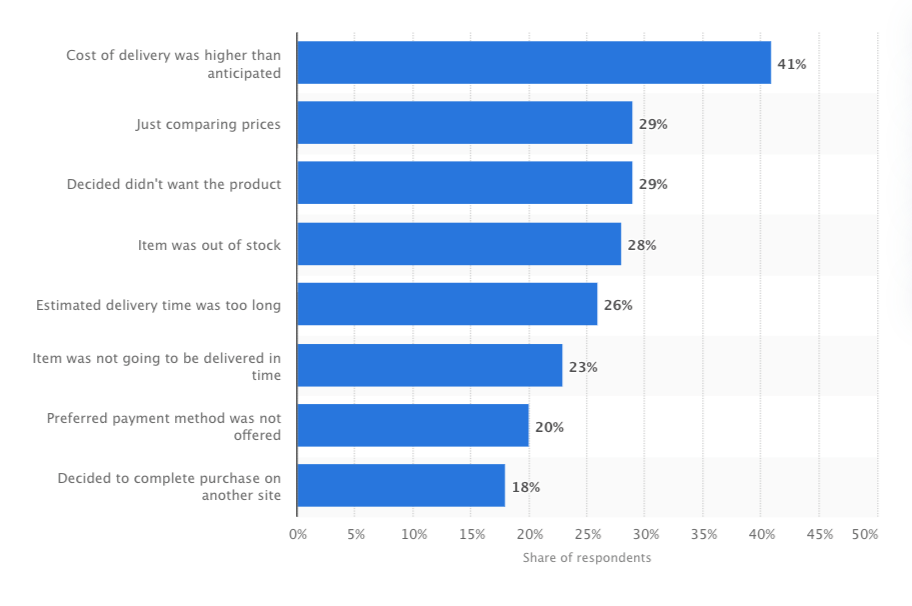
With that said, one way to at least reduce cart abandonment is to offer, or remind, some buyers that they’re eligible for free shipping by using a website popup.
Fashion retailer Kate Spade is an excellent example of a retailer that increases its free shipping policy’s perceived value.
After adding an item to their cart, they remind the buyer that they qualify.
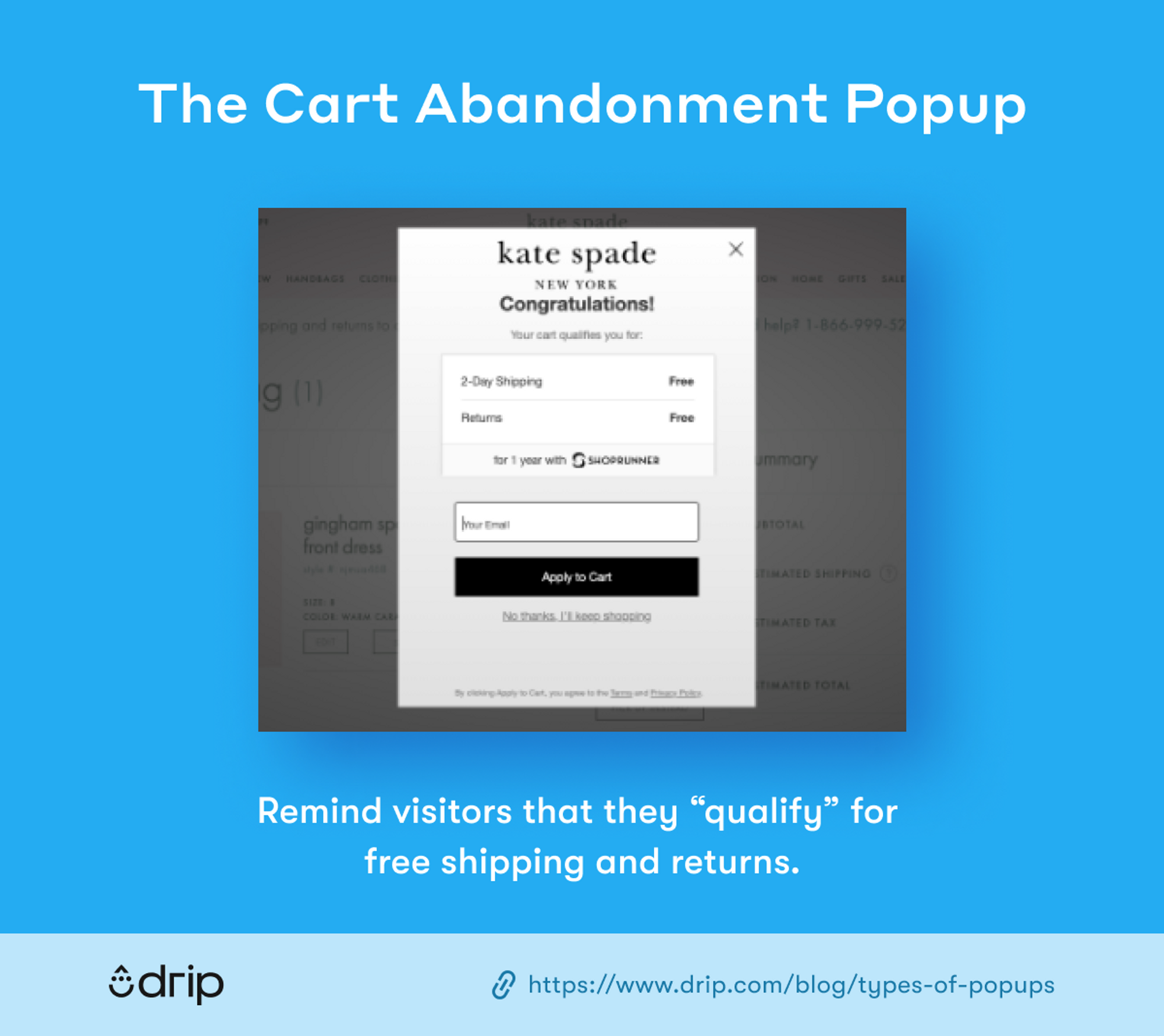
You don’t have to offer free shipping to all visitors. Nor should you feel like you have to. After all, every business has tight margins to contend with.
Using a feature like SiteData, you could trigger a website popup that shows ONLY to visitors that have a certain amount in their basket, encouraging them to buy more.
2. Mobile Popups
Does mobile traffic convert better than desktop? That’s the question we asked ourselves when we analyzed more than a billion website popup views.
As it turns out, it does, and by a fair amount, for that matter.
When we looked at customers with a mobile popup versus customers without, we found that mobile popups outperformed desktop by a whopping 86.49 percent.
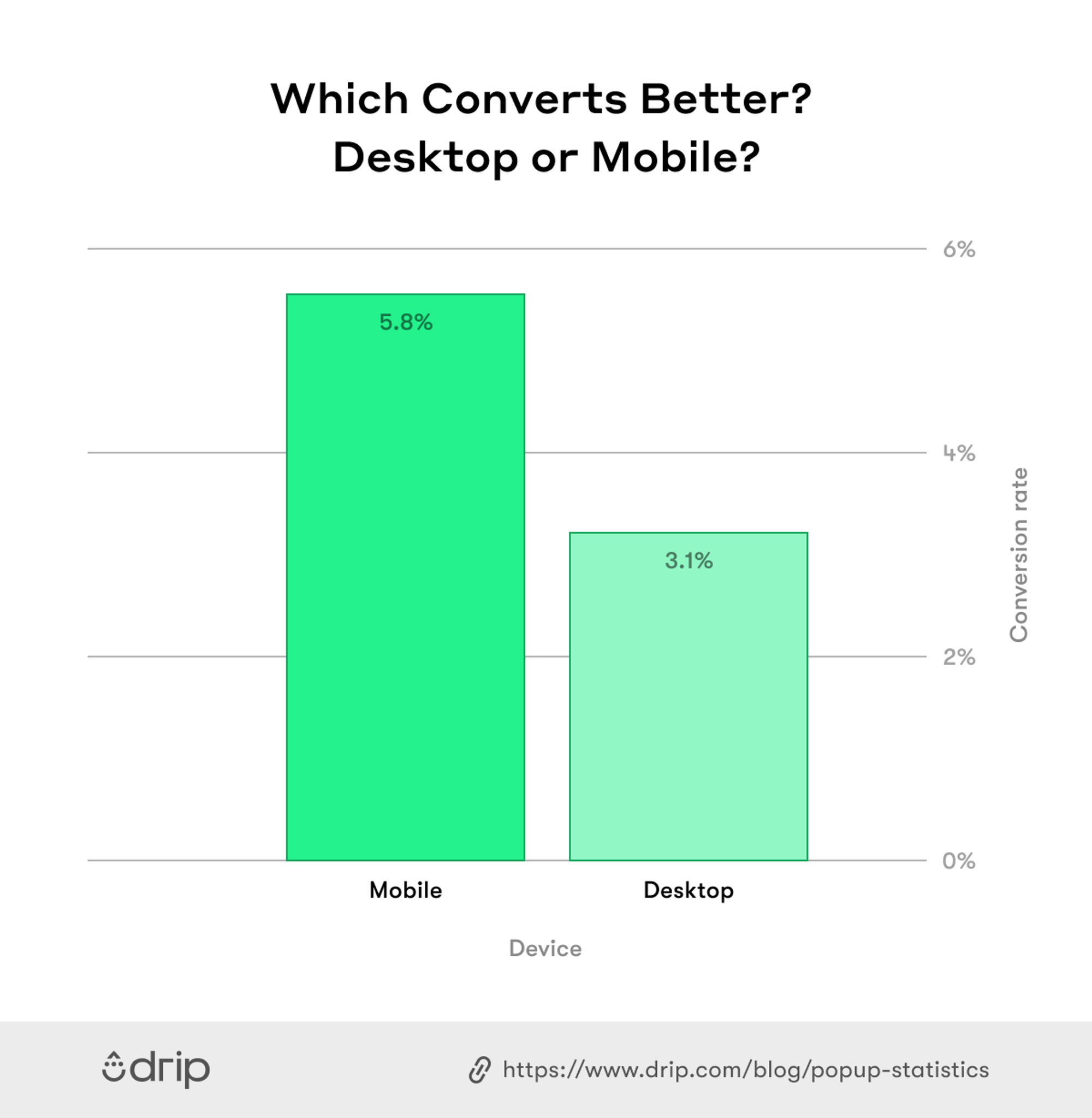
Based on our results, it’s safe to say that you will profit from having a mobile-specific popup. Note the word specific. You want to avoid duplicating an existing desktop campaign.
Why? Because your conversion goal might change based on the device. Let me share a concrete example to explain what I mean.
If you’re selling software, as we are, your marketing goal on desktop might be to drive free trials. (This is what we do on many of our product pages.)
But given our software isn’t mobile-friendly, we want to avoid asking mobile visitors to try our product, and instead, invite them to book a free demo.
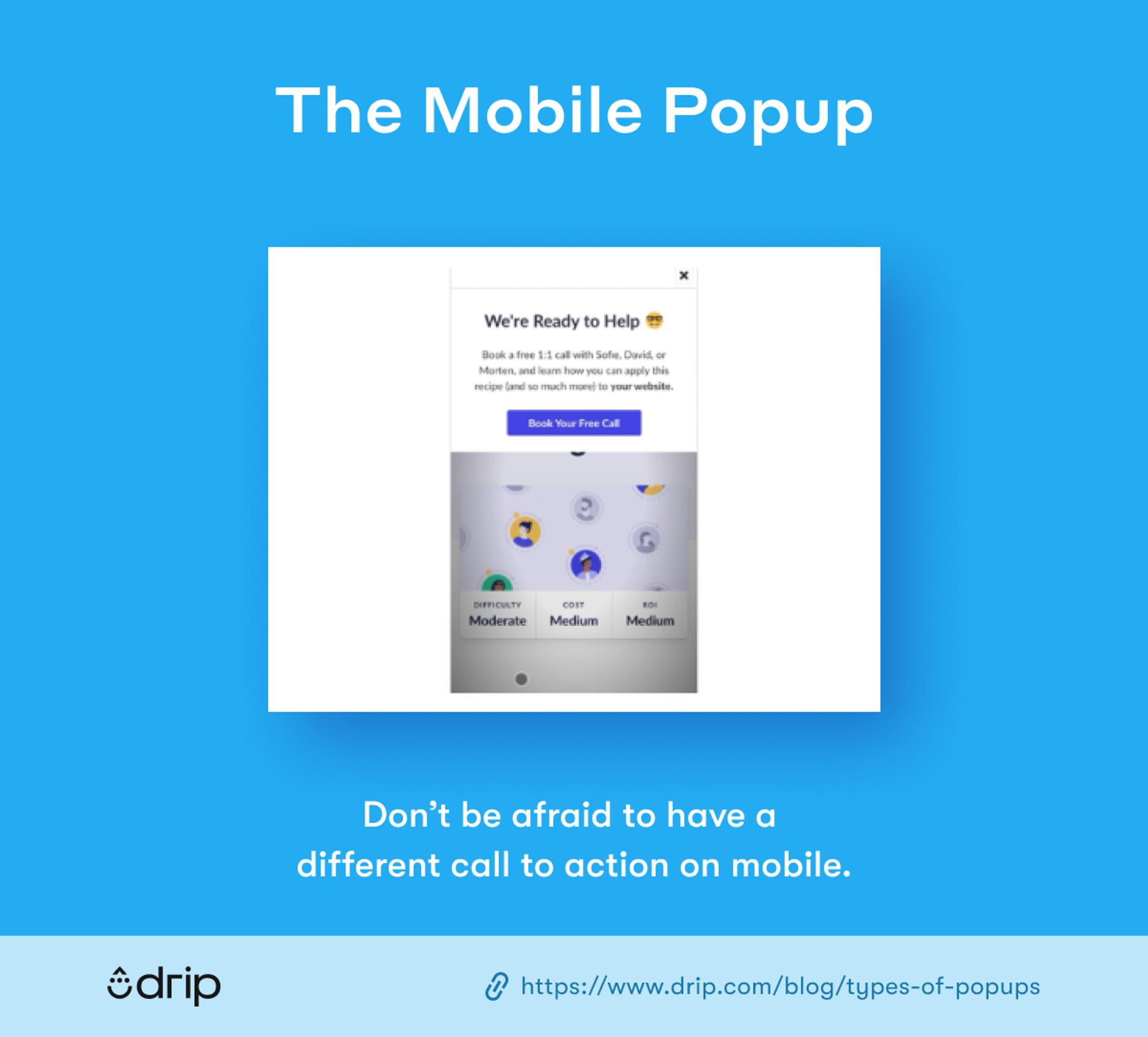
Conversions are important. But what happens after the user takes action is even more critical. Have that in mind when creating any popup, on desktop, or otherwise.
3. Sales Promotion Popups
One common misconception about website popups is you can only use them for capturing leads.
But savvy brands know that’s certainly not the case.
Take Black Friday, for example, one of the busiest days of the year for online retailers. With so many potential shoppers visiting your store, it makes perfect sense to welcome and inform them of your top deals.
In fact, that’s precisely what Wool and the Gang did in 2019.
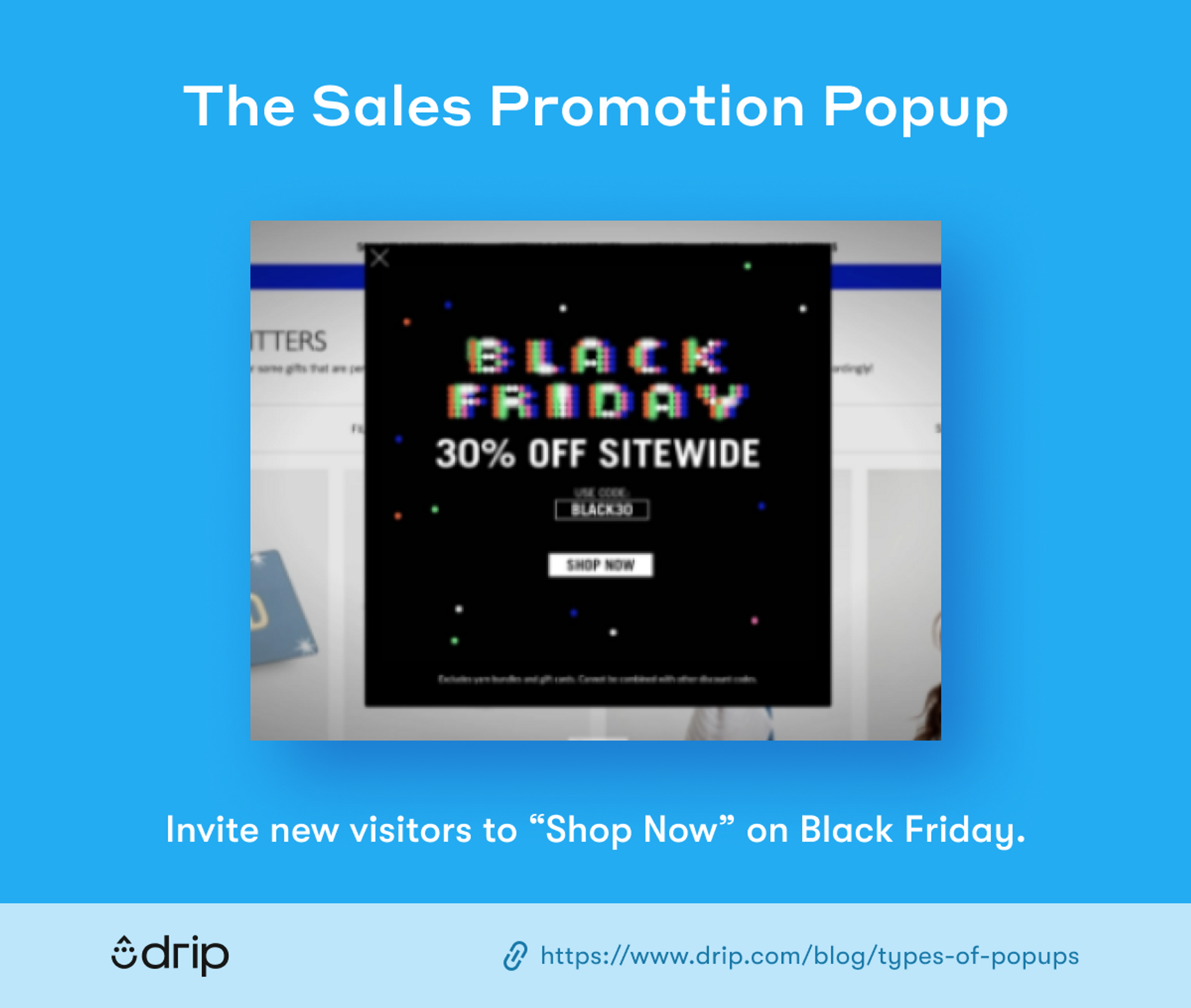
With its eye-catching design and benefit-driven headline, the brand drummed up more business by offering a massive 30 percent reduction on all its products.
If you wanted to build on a campaign like this, you could follow Pura Vida Bracelet’s example and add a countdown timer to drive more urgency.
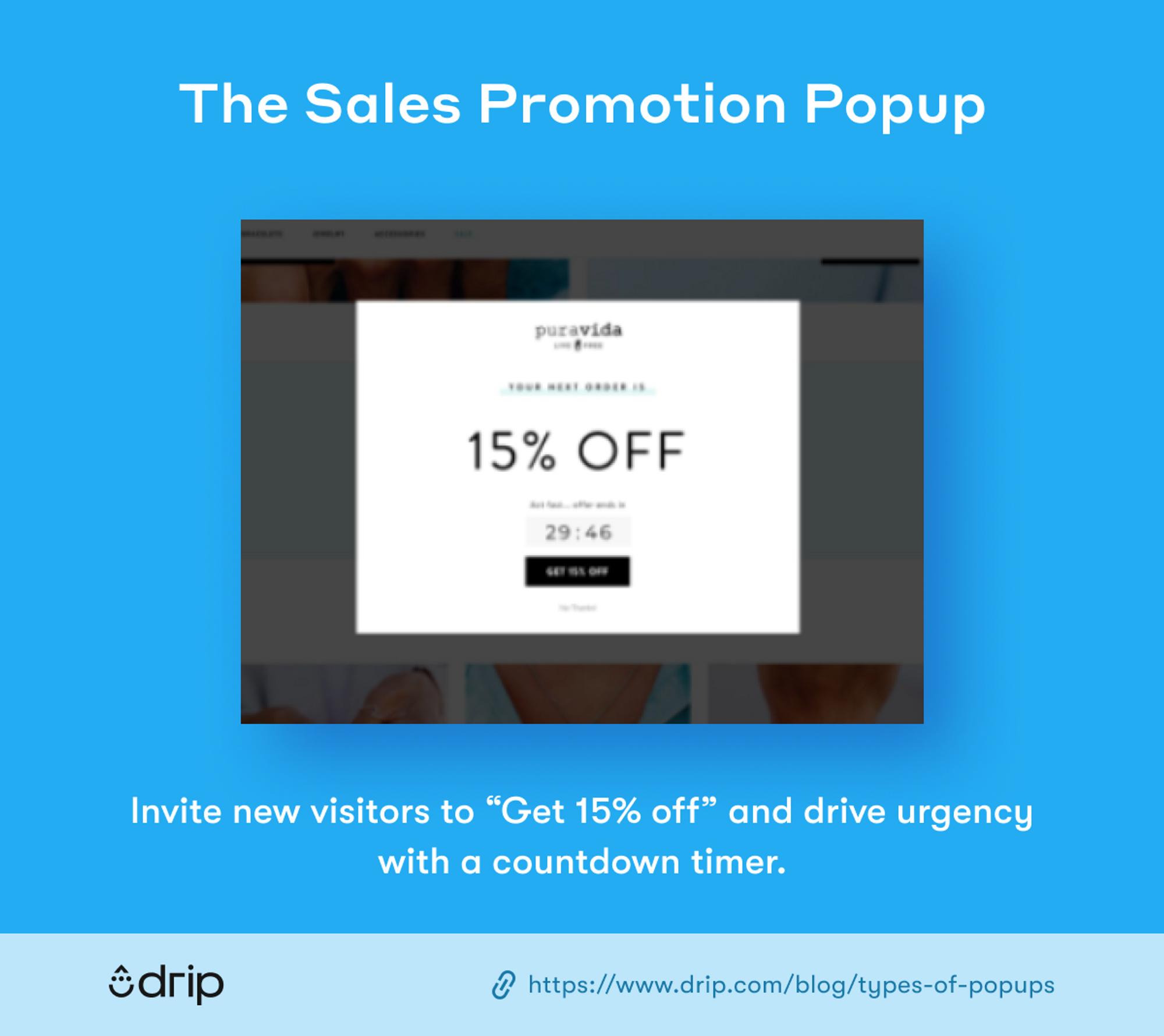
Using a feature like this might not seem like much, but we found from our research of 1+ billion popup views that adding a countdown timer to a popup can increase conversions by as much as 112.93 percent.
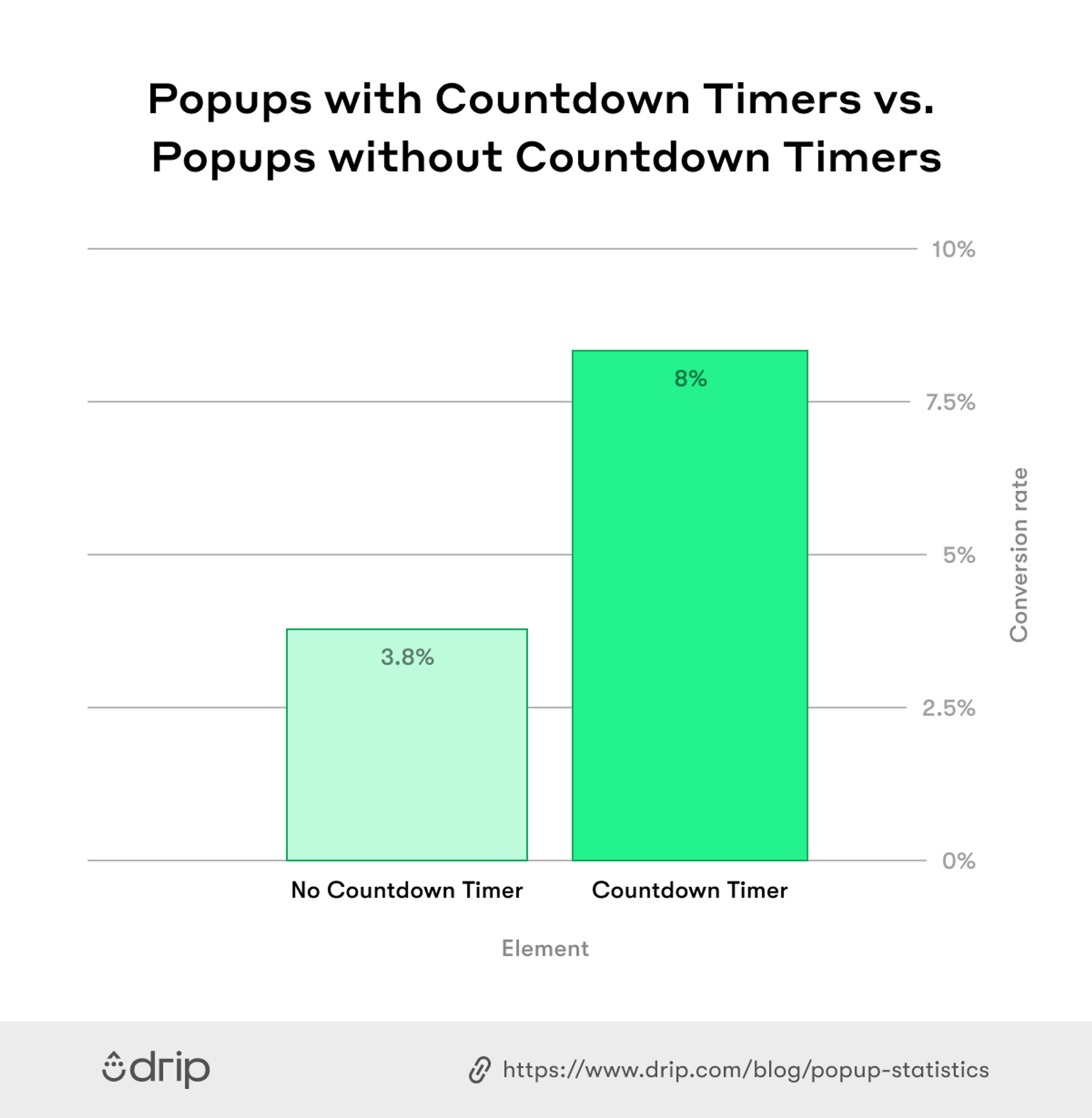
So, if you’re already using a promotion popup, you can’t go wrong with adding a countdown timer. And if you’re not? Then there’s no better place to start than reading the article below.
Further Reading
4. Social Proof Popups
There are many ways to demonstrate social proof using website popups, but there are two, in particular, I want to highlight. The first is obvious: showcasing customer testimonials.
One brand that exemplifies this well is Zapier. When you scroll down the page for one of its articles, a slide-in appears with a testimonial from Bryan Harris, founder of Growth Tools.
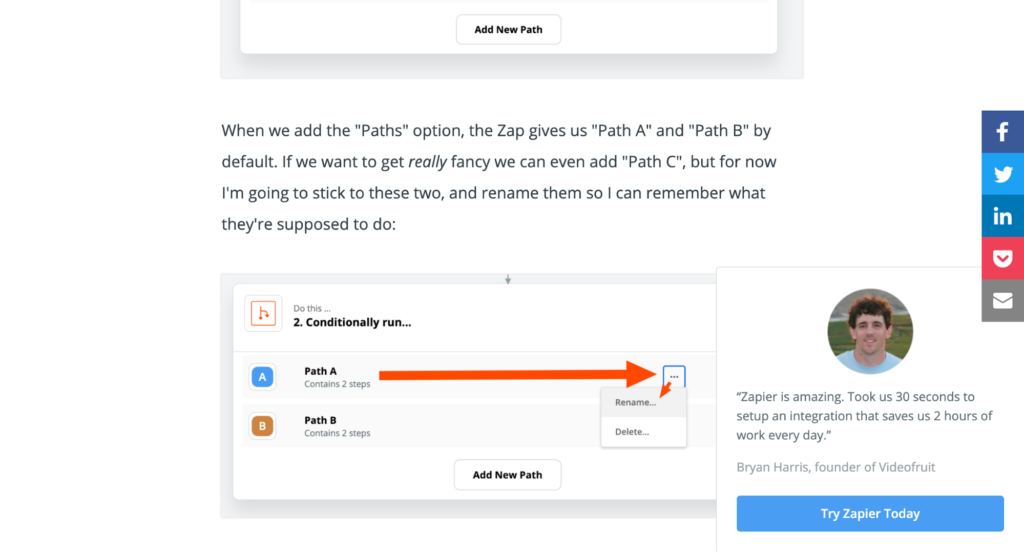
Given that Videofruit rebranded into Growth Tools in 2019, and Zapier is tracking links in the CTA using a UTM parameter, it’s safe to say that this slide-in is driving a healthy number of free trials for Zapier.
The second, less common way to use social proof in website popups, is to inform visitors that the item they’re considering buying is popular with other buyers.
Conveying that information might include the number of people currently looking at the item, or, mentioning that the item is unavailable, as AllBirds does.
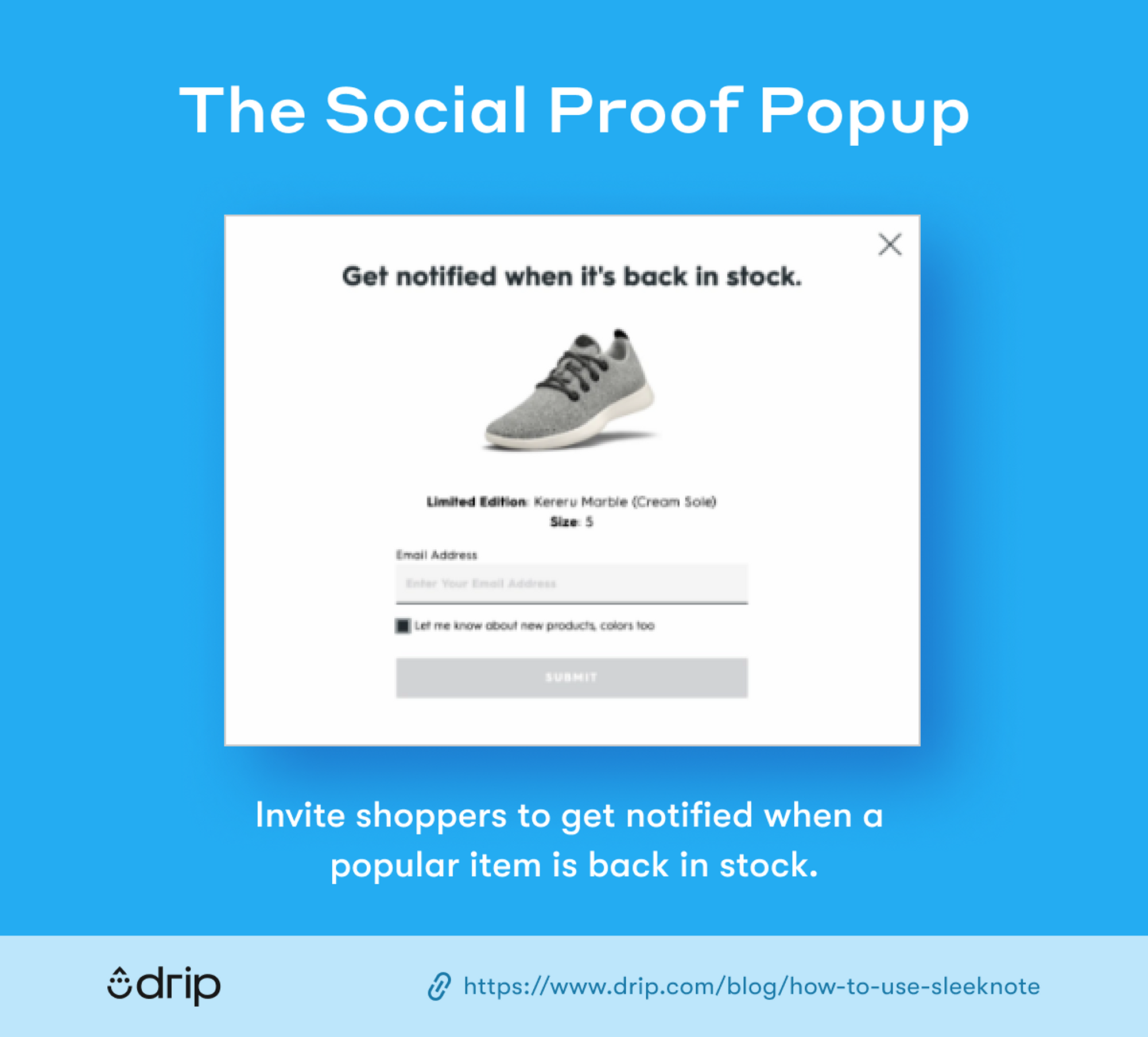
Seray wrote a fantastic post on how you leverage social proof in website popups, which you can read below.
5. Slide-In Popups
If you ever hear anyone complaining that popups are annoying, you can guarantee they’re talking about gimmicky popups that intrude on the reading experience.
You know, like this:
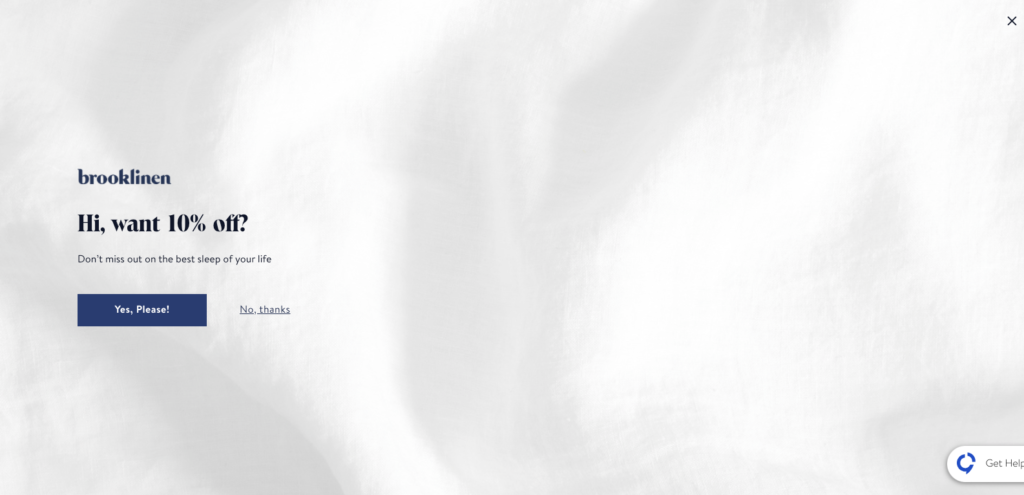
Sorry, Brooklinen. Love the brand; hate the popup.
A better, more user-friendly way to engage visitors, online, is to use popups that are based on the visitor’s browsing behavior, such as a slide-in popup.
What makes a slide-in popup less intrusive is two-fold. First, it has a teaser, which is a way of teasing the visitor to learn more about the offer the popup is promoting. Here’s an example from Falby Shop.
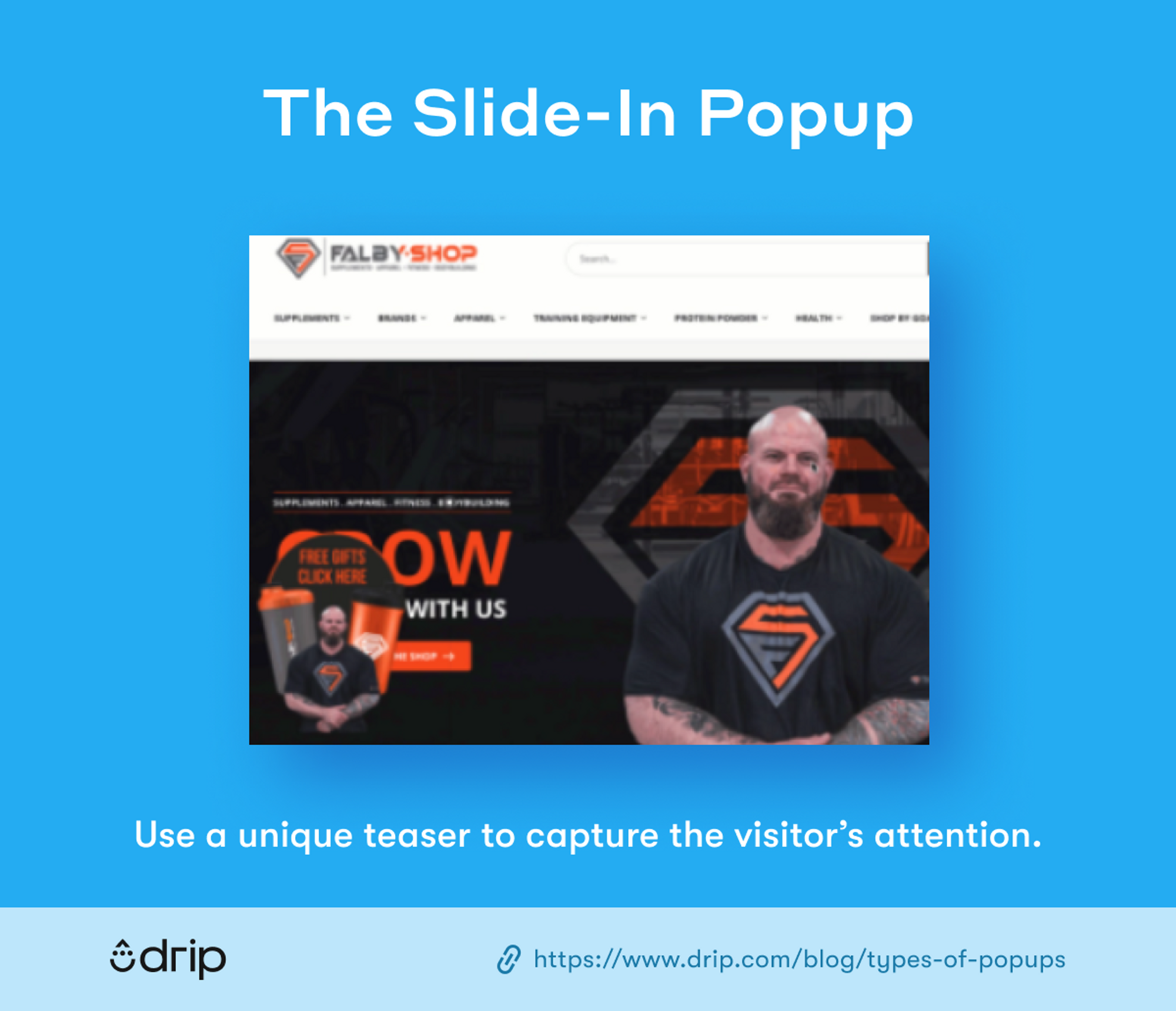
Second, given its limited space, it forces you to be more concise and even creative with your popup copywriting. Take online retailer Apuls, as an example.
With such an extensive product line, the brand uses teaser-triggered slide-ins to recommend the right product to the right visitor. And with teaser copy like that featured below, it’s hard to ignore.
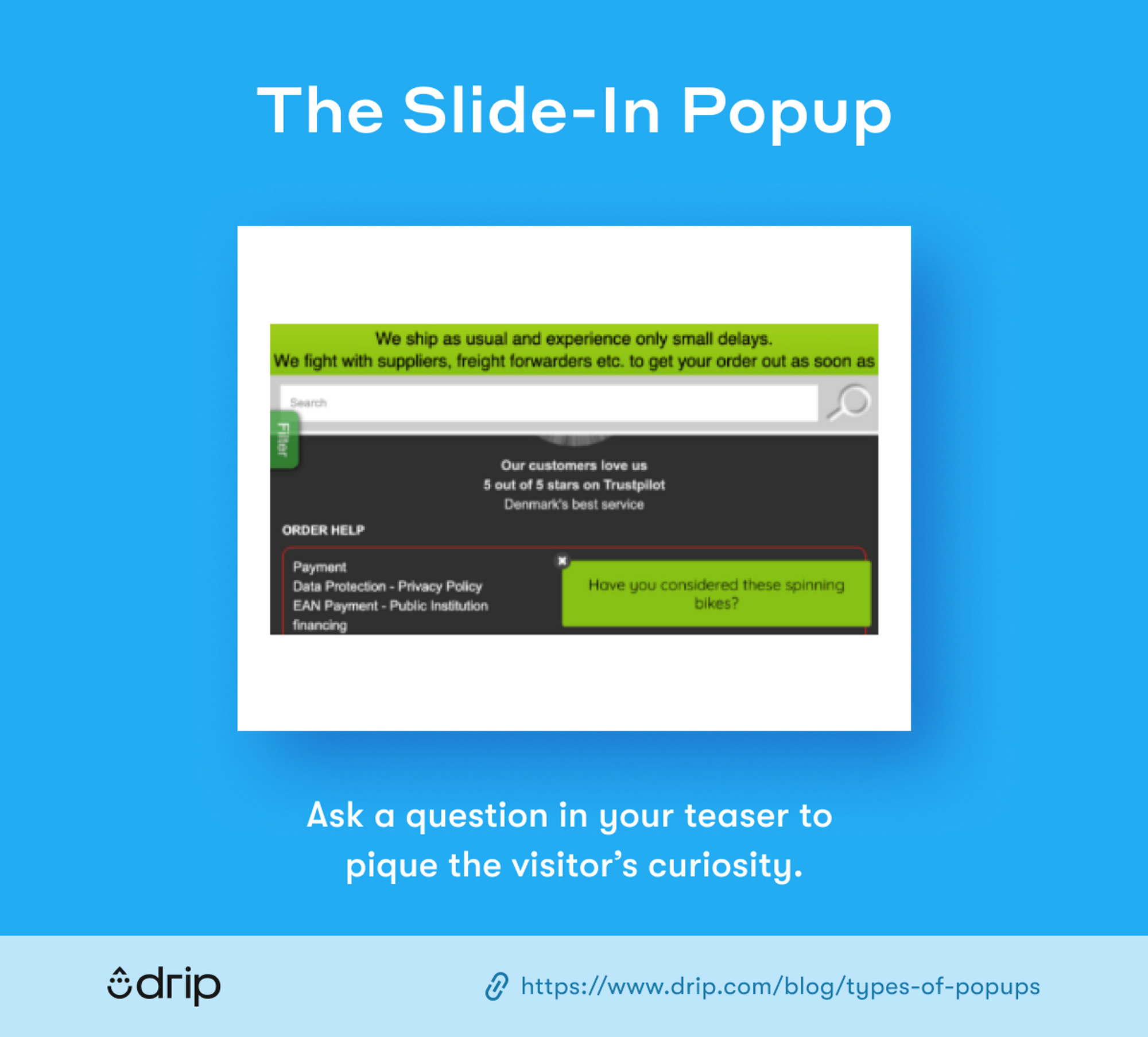
As a final word, it’s essential to consider when it’s to use slide-in popups versus exit intent popups. The former is great for product pages and blog posts; but less effective for shoppers abandoning their carts. Use wisely.
6. Discount Popup Examples
One of the most common ways to reduce cart abandonment, as we saw earlier, is by offering a discount.
But that’s not to say that’s the only way.
There’s a time and a place to offer discounts, and you’ll be glad to know it’s not only about recovering lost sales. In fact, when combined with multistep popups, offering discounts is a great way to enrich lead data.
Wedio, a camera leasing company, knows this better than any B2B I’ve found. When you visit its website for the first time, you see a popup offering a 10 percent discount. (Note the countdown timer above the input fields.)
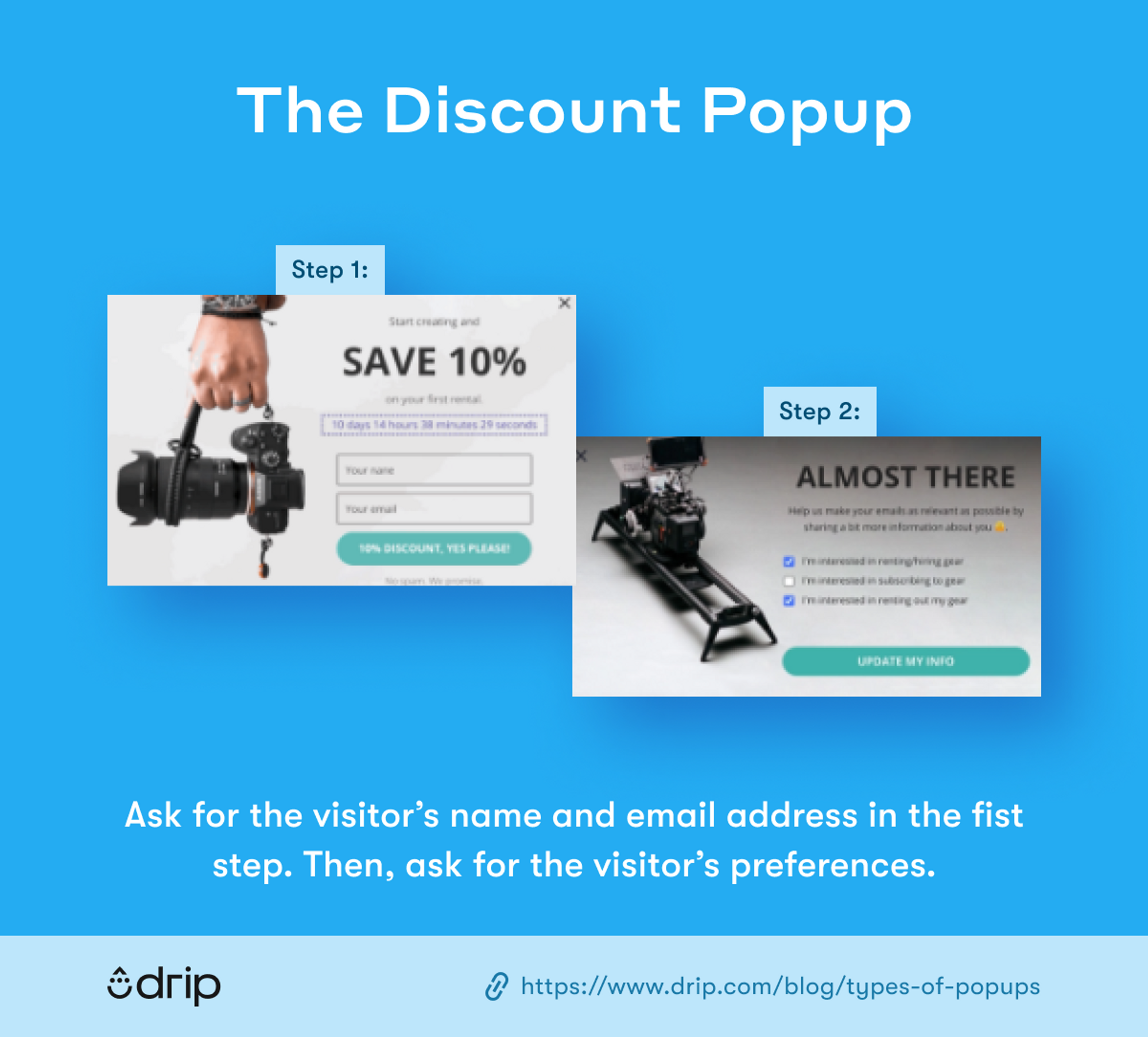
When you enter your name and email, there’s a second step, where the brand uses checkboxes to learn more about your interests and email preferences.
Given that the average conversion rate at this stage is 76 percent, it’s safe to say Wedio is growing a targeted list of subscribers, and its subscribers, in turn, are getting—and using—a well-earned discount.
Win. Win.
Further Reading
7. Nonprofit Popups
So far, we’ve looked at the different types of website popups for-profit organizations utilize to get more subscribers and orders. But it’s nonprofits that need to master popup best practices better than anyone.
Think about it. With email driving as much as 40 percent of all donations, it’s crucial nonprofits learn how to capture as many leads as possible to fund their causes.
One nonprofit that does that masterfully is Unicef USA. When you visit its website for the first time, you see a popup telling you, “You can be a hero to children in need!”
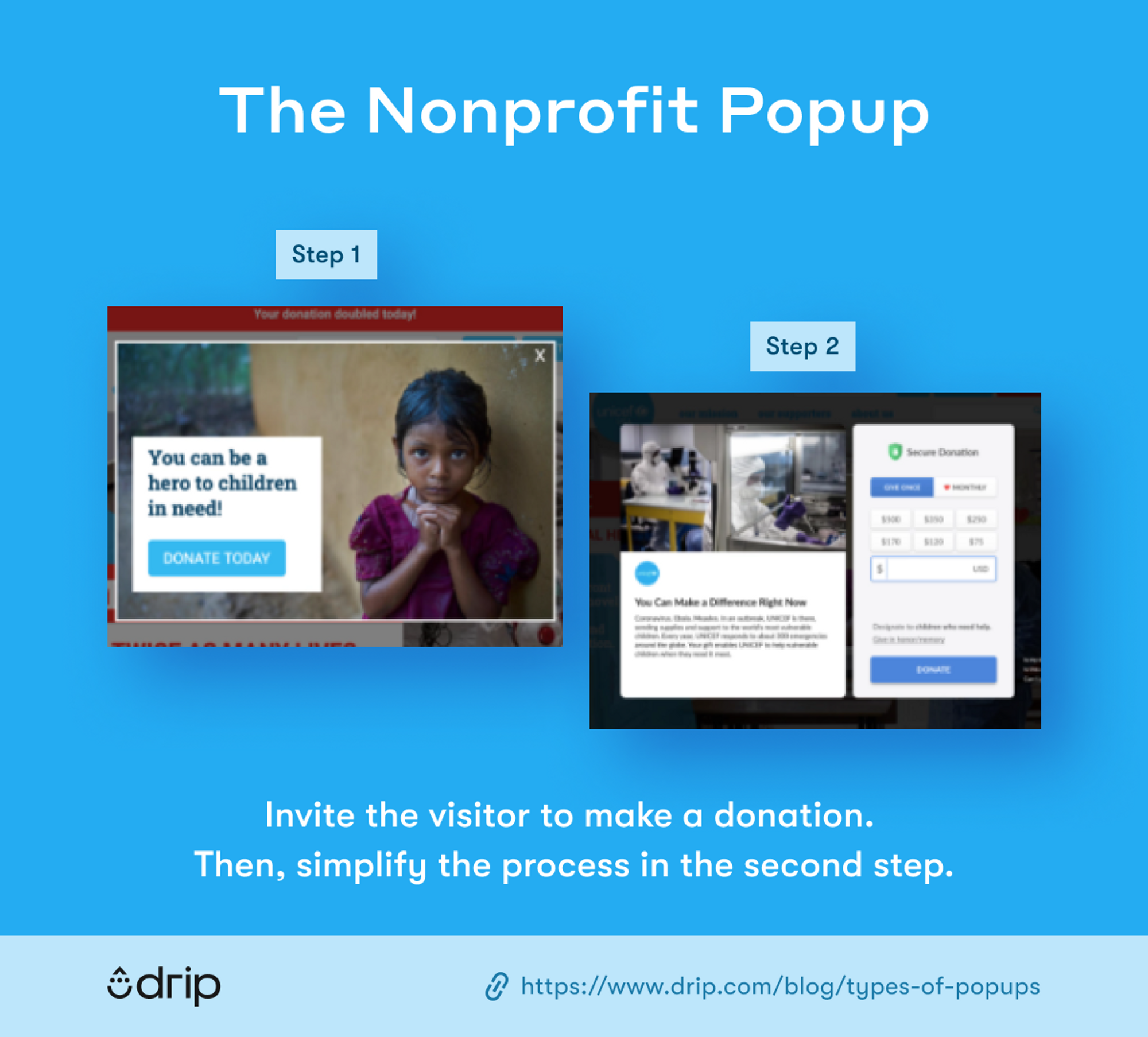
Combining a provocative image of a little girl praying with a clear call-to-action, Unicef builds on its request by inviting you to donate, within the popup.
In our above-cited research, we also found that as much as 76 percent of visitors who complete a form’s first step go on to fill out the second step.
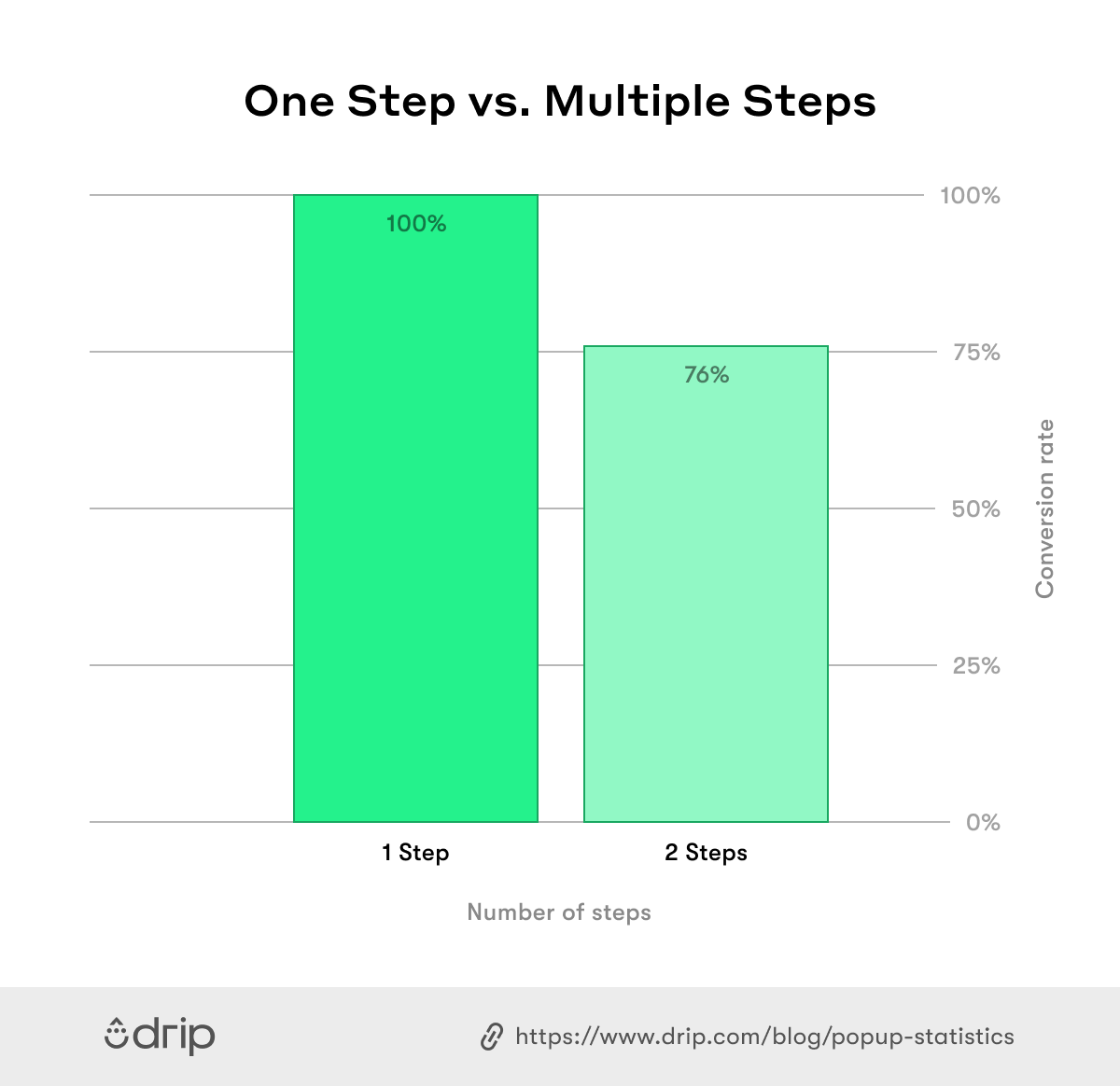
If you’re a for-profit organization like Drip, and you’re looking to hone your marketing chops, take it from me: there’s a lot to learn from nonprofit popups.
Further Reading
Conclusion
In this article, I’ve outlined what I feel are the seven types of website popups that will help you get more leads and drive more orders, directly or otherwise.
But it’s important to remember that a popup is only as good as the end goal it’s helping you achieve.
You can have the best lead capture form in the world, but if you’re not doing anything with returning subscribers and later, returning buyers, nothing else matters.
If you view website popups as a means rather than an end and use them to assist in moving people down your funnel, you will make a difference to your bottom line.
That’s a guarantee.

